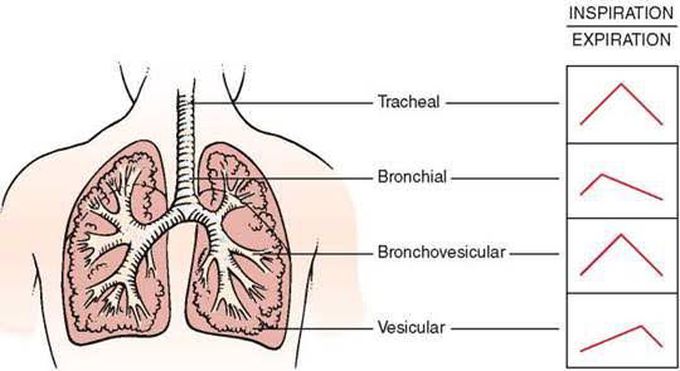


Normal Breath Sounds
Four primary types of normal breath sounds may be heard, depending on location the stethoscope is placed. 1. Tracheal Breath Sounds Tracheal breath sounds are harsh, loud, high-pitched sounds heard over the extrathoracic portion of the trachea. The inspiratory and expiratory components are approximately equal in length and are heard primarily over the trachea (the lower neck) in healthy people. 2. Bronchial Breath Sounds Bronchial breath sounds are heard over the large bronchi (over the breastbone or sternum in the mid-chest region and between the shoulder blades on the back). They are higher-pitched and louder than breath sounds heard over other parts of the lungs, but quieter and more hollow-sounding (tubular) compared with tracheal breath sounds. Hence, these sound like air rushing through a tube. The expiratory component is louder and longer than the inspiratory component and there is a pause between inspiration and expiration. Bronchial breath sounds are also sometimes heard in other regions of the lungs (due to sound transmission) with conditions such as pneumonia, lung tumors, atelectasis (collapse of part of a lung), or a pneumothorax (collapsed lung). 3. Bronchovesicular breath sounds Bronchovesicular breath sounds are a mixture of bronchial and vesicular sounds. The inspiratory and expiratory components are equal in length. They are normally heard only in the first and second interspaces anteriorly and between the scapulae posteriorly. This is the area overlying the carina and mainstem bronchi. 4. Vasicular Breath Sounds These are the sounds heard over much of the lungs. They are lower-pitched and softer than tracheobronchial breath sounds. The inspiratory component is much longer than the expiratory component, which is also much softer and frequently inaudible.

